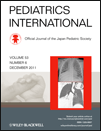Clinical and molecular microbiological characteristics of carbapenem-resistant Acinetobacter baumannii strains in an NICU
Abstract
Background: Seventeen cases of Acinetobacter baumannii infection in a neonatal intensive care unit (NICU) were evaluated. The strains were characterized as resistant to carbapenems. The aim of the present study was therefore to investigate the clinical and molecular epidemiological characteristics of the 17 carbapenem-resistant A. baumannii strains.
Methods: Samples were isolated from blood or sputum from the patients in the NICU, cultured using conventional techniques and an automated system. Multiplex polymerase chain reaction (PCR) was used to detect blaOXA-51-like, blaOXA-23-like, OXA-24, OXA-58 and Ambler class B carbapenemases. The genotype of the strains was identified on pulsed-field gel electrophoresis (PFGE).
Results: BlaOXA-23 was detected in all of the isolates. PFGE genotype analysis suggested three clones among the 17 strains. Two clones were isolated from other wards of the hospital including the adult ICU and Department of Pulmonology. The other clone was proved to be the first appearance in the hospital as genotype analysis.
Conclusion: BlaOXA-23 was the drug-resistant gene that made A. baumannii resistant to carbepenem. The source of blaOXA-23 in the 17 isolates was different.




